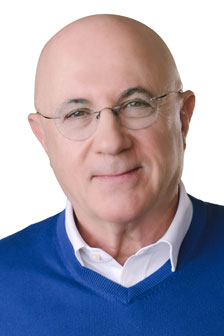Home prices too hot, mortgage rates too low.

I fully expect that by the 3rd quarter of this year we will be in an all-in growth mode. And then inflation will begin to rise. My hope for housing is that the 10-year yield will be at least 2% by year’s end. We do not need hyper-low mortgage interest rates. This is not a recessionary market. Just the opposite. We need the 10-year yield to rise to 2%, preferably 2.5% to 3%, bringing mortgage interest rates to a 5% range. We need to clip the current rapid price growth, cool down appreciation, temper multiple bids, and ease buyer frustration.
I fully expect that by the 3rd quarter of this year we will be in an all-in growth mode. And then inflation will begin to rise. My hope for housing is that the 10-year yield will be at least 2% by year’s end. We do not need hyper-low mortgage interest rates. This is not a recessionary market. Just the opposite. We need the 10-year yield to rise to 2%, preferably 2.5% to 3%, bringing mortgage interest rates to a 5% range. We need to clip the current rapid price growth, cool down appreciation, temper multiple bids, and ease buyer frustration.
Everyone is talking about it. I’m living it. In the past 6 weeks I have placed 8 homes under contract, each within 2 days. One at list price, all others over list. Demand from buyers is at an all-time high, whereas homes for sale are at all-time lows. In Sarasota County less than a 1-month supply of homes and condos are for sale.
Here’s what low inventory and high demand looks like. There were 75% less homes for sale in February vs. February of last year, 30% more homes went under contract and sold. Year over year they rose over 20%. The average sold price per square foot and median sold price increased 21% from last year at this time, the average sold price up 28%.
Condo sales were similarly constituted. The number of condos for sale was down 60%. Pended and sold sales were up 55%. The average sold price per square foot is up almost 16%; the average sold price, based on pended sales, up over 22%.
The housing market’s fundamentals are strong, even at current levels. Rates are low and credit standards are high. Unlike the pre-Great Recession run-up, it is not a speculative, investor market. But the market is too hot. My concern is that prices are escalating too rapidly. I find temperance in the recent rise of the 10-year yield in US Treasurys. Higher treasury yields traditionally push mortgage rates higher, customarily at an approximate 2X factor. Not so with the onslaught of COVID. The Fed stepped in to buffer the crisis, the damage to the economy and public. It normalized the typical spread between treasury yields and mortgage rates by buying US Treasurys and mortgage-backed securities in the trillions. It thereby absorbed yield increases and allowed the 30-year rate to fall. By December 2020, the 10-year yield was under 1%, mortgage rates were in the low to mid-2% range. But in January, with rising concerns of inflation, including but not limited to the accumulated $7+ trillion in Fed purchases, anticipated new year trillion dollar+ congressional stimulus packages, and an estimated 2.74 million homeowners in forbearance and foreclosure moratorium, yields began to rise. Yesterday the yield on the 10-year Treasurys was 1.54%, the average 30-year mortgage 3.25%.
The 3 dominant movers of real estate are demographics, work/lifestyle changes and interest rates.
Demographics. I have written in prior commentaries of the seismic power of demographics. Millennials, 22 to 40 years of age, are the largest demographic group of all-time. Those 29 to 33 are just coming of age as first-time homebuyers. For older Millennials, many are purchasing a larger family home. Gen Xers, 41 to 56 years of age are the 2nd largest demographic group, prime age for “bigger homes”. You can’t argue demographics. Accordingly, for many years to come Millennials and Gen Xers will provide a continuous and escalating supply of homebuyers.
Work/Lifestyle Changes. Well documented is the flight of our feeder markets up North to our alluring Gulf Coast. As we reach herd immunity, the economy and pent-up demand will be released from its shackles, propelled by the $1.9 trillion stimulus package. Homeowners will implement life changing decisions. More homes will be listed for sale. Further, the current breakdown of building supply chains and indeterminate prices of home building materials, which have restricted the ability of builders to release new homes for purchase, will begin to ease. More new homes will be available for sale.
Interest Rates. The combination of demographics, the vaccine, and a full re-opening of the economy will provide the perfect storm to further spur on home price growth. But $4 trillion in debt relief, another $1 trillion in unallocated debt relief, the President’s signing yesterday of $1.9 trillion for “America’s Rescue Plan”, and 2.74 million homeowners in forbearance and foreclosure moratorium, is a precursor to inflation. Black Knight, the leading provider of data and analytics for servicers and lenders reported that as of December 2020, 7.1% of all mortgage loans in Florida were not current, an 88.3% year over year increase. This is a risk that has been extended to September, which at some point will have to be dealt with. I leave this for you to ponder.